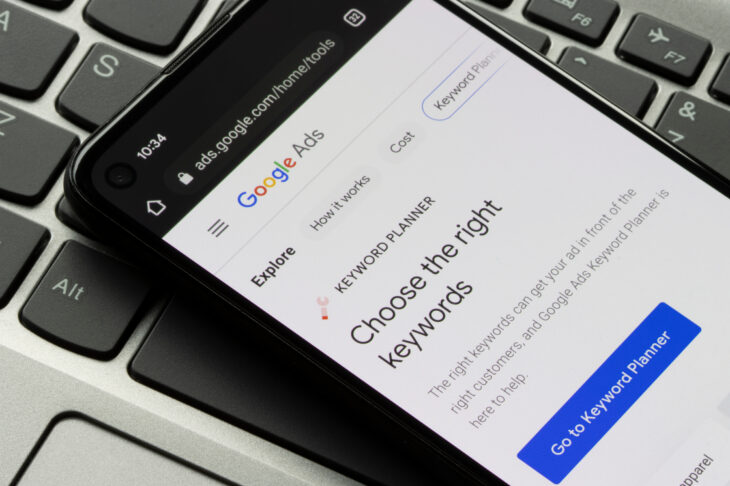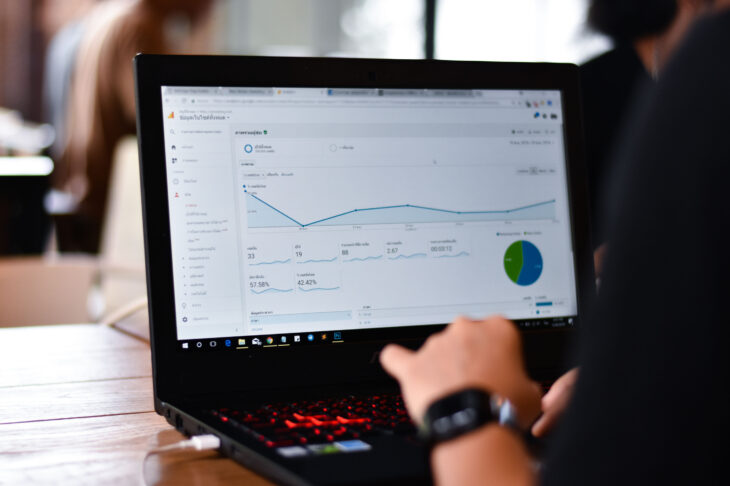- Digital Marketing
- Perspective
The Digital Trends of 2024.

“Anything new to report on search? SEO? Digital?” Nope.
A response never, ever uttered. Lee Savery, Digital Content and SEO Manager is knee (maybe neck) deep in the ever-changing, sometimes frustrating, but always exciting (he says) world of search. When considering what digital trends to look out for in 2024, Lee delved into four that he deems the most important, particularly as we approach Google’s March 2024 update…
The top digital trends to look out for in 2024
It’s all about Google.
If you think digital, you think Google. In its monopolising position, Google reigns supreme over our lives (whether you work in digital marketing or not!). And, in its ultimate wisdom, Google relishes keeping us on our toes, having been known to run 800,000 algorithm experiments and action over 4,000 changes to search in just 12 months. So, when asked if there is anything new to report I sit, wide-eyed. But, in all the smaller tweaks several profound changes cannot be avoided; changes that have seismic impacts on B2B SEO strategies and B2B content marketing campaigns. So, here is what we should be keeping our eyes on in 2024…

Mobile and voice search.
As of January 2024, 55% of all website traffic comes from mobile devices. In fact, 92.3% of internet users access the internet using a mobile device. It’s no surprise that mobile traffic and usage increases, generally, year-on-year, but what is changing is how we search. Voice assistant searches are expected to reach almost 8.5 billion in 2024. So, what does this mean for your B2B brand? To put it simply, you must be optimising content for Google’s answer boxes – known in the industry as ‘featured snippets’. If you want your content read aloud by voice assistants, each piece of content must be optimised to answer your audiences’ questions.
For many B2B brands, optimising for voice assistant searches is relatively low on the priority list but, my prediction is that over the next 12 months, this will (and should) continue as one of the key tactics within any digital marketing campaign if brands are to remain at the forefront of customer attention and press ahead of competitors online.
Zero-click results.
Featured snippets also contribute to the growing trend towards zero-click searches. Hear me out! Planning a zero-click campaign as part of your search strategy could seem counterproductive, but due to the growth in voice search, there really is method in the madness.
The most common type of snippet is a paragraph, but video, tables and lists are also allowed by Google. Through keyword research and careful mapping, a brand can generate multiple snippets from landing pages, PDF documents and blog content – all of which are featured near the top of page one. If we go back to basics, we’re at the awareness and attraction stage of the marketing funnel. Even though your snippet may not generate clicks, if your content is optimised well, you’re still giving your audience the answers they’re after, which accounts for a lot. Also, perhaps many aren’t aware of this: over two-thirds of Google searches end without a click. Even though zero-click results aren’t attached to a tangible metric at the moment, it doesn’t mean it won’t be in the future. It’s best to start optimising for snippets, now.

Video content.
In the face of TikTok, Instagram reels and other social media marketing tools, it gives me great pleasure to say that YouTube remains up there as the second most used search engine in the world. Over 100 hours of video content is uploaded every minute, and it has over three billion searches per month. As Google ranks YouTube videos, it is crucial your B2B channel is optimised.
It’s important to add keywords to your video titles and descriptions to ensure you’re ranking for words and phrases your audience is searching for. You should always generate chapters, captions and insert relevant videos across key landing pages on your website. This all seems relatively simple advice and perhaps, not as ‘shiny’ as newer video platforms – but, when building a B2B marketing strategy, YouTube remains at the top of the priority list.
However, that doesn’t mean you shouldn’t ignore TikTok entirely! With TikTok videos now starting to appear as featured snippets in search results, having a presence on the platform with a digital strategy behind it could reap some unexpected wins.
AI-generated content.
We cannot talk about search without mentioning AI-generated content. Do you remember those few, short months when Google behaved like one of us? They were cautious. Continually reiterating its brand values and intent: “original content written by people, for people”. But alas, here we are on the road to adoption. Google ended up updating its stance on AI in September 2023, stating “original, helpful content created for people in search results.”
Obviously, it’s no surprise, really. Google had to step up to compete with ChatGPT and other AI tools gaining traction. So, with AI, answers to search queries can be generated based on data the system has been trained to read. Ultimately, it will create its own summary to a question pulling from various sources. The fear is that users won’t scroll and click through to websites, instead, users will digest the AI summary that sits at the top of the page.
The saving grace at the moment is that we’re still sceptical of the technology and I’d say most of us can spot which content has been written by humans, and which hasn’t. This is definitely ‘watch this space’ but my thought is that content writers may have to adapt and become AI copy editors.
What else is new in 2024?
Regardless of whether content is generated by humans or AI – Google’s mission has always stayed the same, it’s to provide users with the best, most valuable experience and direct them to a relevant website. In March 2024, Google will roll out a new metric called ‘Interaction to Next Pains (INP) – this will replace First Input Delay (FID).
INP will measure how quickly a webpage responds to user interaction: this means anybody on your site clicking through to a new page or clicking a call-to-action button. INP will review the time it takes for the next visual to appear once the user has completed said interaction. To pass this metric, INP should be around 200 milliseconds or under.
If websites fail to achieve this speed, they will start to slip down the search results list. It’s that simple. Action needs to be taken now. Websites will require a full review and technical audit to ensure that the user experience is seamless and that there are no unusual occurrences or glitches.
And in my experience, B2B websites tend to be behind B2C from a technical SEO standpoint. With this impending change, your website could slip lower in the rankings than your competition. Luckily, I know a team of SEO experts who are eager to change that for you…

